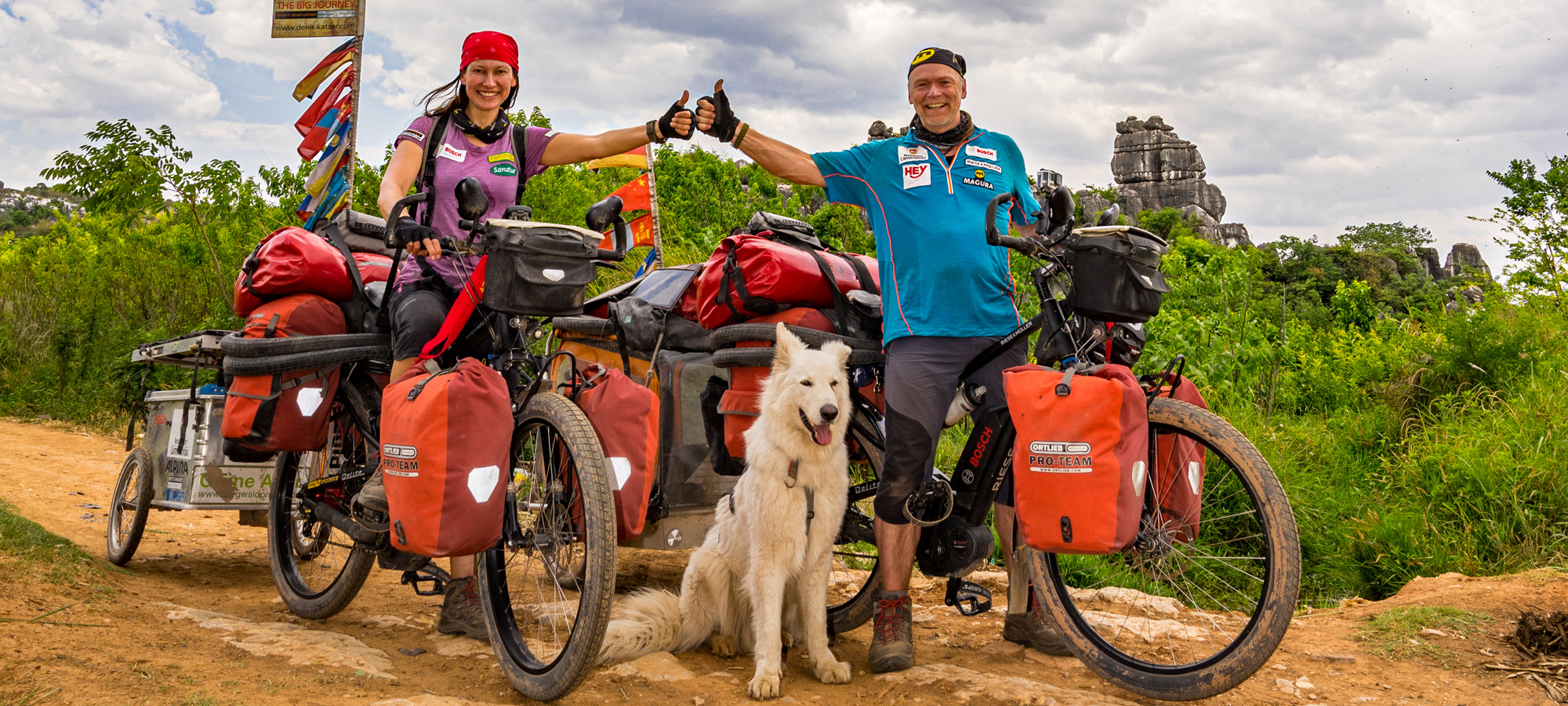
Reed land
N 47°30'46.4'' E 040°49'39.4''In the morning, we can still feel the 110 kilometers of yesterday in our thighs. We want to take it easy today and plan a shorter route. However, the extreme easterly wind has returned in full force and makes the day very strenuous from the very first minute. After 35 kilometers we are exhausted. As always, we look for a place to stop for lunch. There is an endless amount of garbage at all kinds of rest areas. Here, too, everything that is no longer needed is thrown into nature without restraint. However, in comparison to Ukraine, there is a state road cleaning service that keeps many roadsides clean as far as possible.
At a road construction site we find some peace from the wind behind a pile of sand. Ignoring the garbage, we give our bodies a breather. Then it goes on. For hundreds of kilometers, the traffic artery has been built on a dam that rises a few meters above the lowlands. Reeds and fertile fields line our path. From a distance, we sometimes catch a glimpse of the Don.
In ancient times, the river was also called the Tanais. Greek geographers at the time described the Don as the border between Europe and Asia. Later, the Tartars who invaded Europe called the river Tuna or Duna. The 1,870-kilometer-long river rises southeast of Moscow and flows into the Sea of Azov not far from the city of Azov.
The Donbecken has a peaceful effect on us. Birds nest in the nearby reeds. Large areas of water appear to have been dammed up for fish farming. Nothing limits our vision. It’s hard to believe that such a gentle-looking natural landscape was the scene of major battles between German and Soviet troops during the Second World War.

